Class-C Pulsed Power Amplifier with Voltage Divider Integrated with High-Voltage Transistor and Switching Diodes for Handheld Ultrasound Instruments
Abstract
:1. Introduction
2. Materials and Methods
2.1. Implementation of Class-C Pulsed Power Amplifiers
2.2. Analysis of Class-C Pulsed Power Amplifiers
3. Results and Discussion
3.1. Class-C Pulsed Power Performances
3.2. Ultrasonic Transducer Performances with Class-C Pulsed and Proposed Power Amplifiers
4. Conclusions
Author Contributions
Funding
Institutional Review Board Statement
Informed Consent Statement
Data Availability Statement
Conflicts of Interest
References
- Daniels, J.M.; Hoppmann, R.A. Practical Point-of-Care Medical Ultrasound; Springer: New York, NJ, USA, 2016. [Google Scholar]
- Kalaitzakis, E.; Vilmann, P.; Bhutani, M.S. Therapeutic Endoscopic Ultrasound; Springer: Berlin, Germany, 2020. [Google Scholar]
- Mattoon, J.S.; Sellon, R.K.; Berry, C.R. Small Animal Diagnostic Ultrasound; Elsevier Health Sciences: Amsterdam, The Netherlands, 2020. [Google Scholar]
- Arnau, A. Piezoelectric Transducers and Applications; Springer: Berlin, German, 2004; Volume 2004. [Google Scholar]
- Safari, A.; Akdogan, E.K. Piezoelectric and Acoustic Materials for Transducer Applications; Springer Science & Business Media: Berlin, Germany, 2008. [Google Scholar]
- Zhou, Q.; Lam, K.H.; Zheng, H.; Qiu, W.; Shung, K.K. Piezoelectric single crystal ultrasonic transducers for biomedical applications. Prog. Mater. Sci. 2014, 66, 87–111. [Google Scholar] [CrossRef] [PubMed] [Green Version]
- Zennaro, F.; Neri, E.; Nappi, F.; Grosso, D.; Triunfo, R.; Cabras, F.; Frexia, F.; Norbedo, S.; Guastalla, P.; Gregori, M. Real-Time Tele-Mentored Low Cost “Point-of-Care US” in the Hands of Paediatricians in the Emergency Department: Diagnostic Accuracy Compared to Expert Radiologists. PLoS ONE 2016, 11, e0164539. [Google Scholar] [CrossRef] [PubMed]
- Soni, N.J.; Arntfield, R.; Kory, P. Point of Care Ultrasound; Elsevier Health Sciences: Oxford, UK, 2019. [Google Scholar]
- Machi, J.; Staren, E.D. Ultrasound for Surgeons; Lippincott Williams & Wilkins: Philadelpia, PA, USA, 2005. [Google Scholar]
- Vijaya, M. Piezoelectric Materials and Devices: Applications in Engineering and Medical Sciences; CRC Press: Boca Raton, FL, USA, 2016. [Google Scholar]
- Kamaya, A.; Wong-You-Cheong, J.; Woodward, P.J. Diagnostic Ultrasound for Sonographers; Elsevier Health Sciences: Amsterdam, The Netherlands, 2019. [Google Scholar]
- Adhikari, S.; Blaivas, M. The Ultimate Guide to Point-of-Care Ultrasound-Guided Procedures; Springer: Berlin, Germany, 2019. [Google Scholar]
- Karlen, W. Mobile Point-of-Care Monitors and Diagnostic Device Design; CRC Press: Boca Raton, FL, USA, 2014. [Google Scholar]
- Baston, C.M.; Moore, C.; Dean, A.J.; Panebianco, N. Pocket Guide to POCUS: Point-of-Care Tips for Point-of-Care Ultrasound; McGraw Hill Education, Incorporated: New York, NJ, USA, 2019. [Google Scholar]
- Miele, F.R. Ultrasound Physics & Instrumentation; Pegasus Lectures, Inc.: Forney, TX, USA, 2013. [Google Scholar]
- Uchino, K. Advanced Piezoelectric Materials: Science and Technology; Woodhead Publishing: Cambridge, UK, 2017. [Google Scholar]
- Edelman, S.K. Understanding Ultrasound Physics; Baker & Taylor: Charlotte, NC, USA, 2012. [Google Scholar]
- Qiu, W.; Wang, X.; Chen, Y.; Fu, Q.; Su, M.; Zhang, L.; Xia, J.; Dai, J.; Zhang, Y.; Zheng, H. A Modulated Excitation Imaging System for Intravascular Ultrasound. IEEE Trans. Biomed. Eng. 2016, 64, 1935–1942. [Google Scholar] [CrossRef] [PubMed]
- Gao, Z.; Gui, P. A look-up-table digital predistortion technique for high-voltage power amplifiers in ultrasonic applications. IEEE Trans. Ultrason. Ferroelectr. Freq. Control 2012, 59, 1550–1557. [Google Scholar] [PubMed]
- Capineri, L. A 15 MHz bandwidth, 60 Vpp, low distortion power amplifier for driving high power piezoelectric transducers. Rev. Sci. Instrum. 2014, 85, 104701. [Google Scholar] [CrossRef] [PubMed]
- Bianchi, D.; Quaglia, F.; Mazzanti, A.; Svelto, F. Analysis and Design of a High Voltage Integrated Class-B Amplifier for Ultra-Sound Transducers. IEEE Trans. Circuits Syst. I Regul. Pap. 2014, 61, 1942–1951. [Google Scholar] [CrossRef]
- Albulet, M. RF Power Amplifiers; SciTech Publishing: London, UK, 2001. [Google Scholar]
- Nguyen, C. Radio-Frequency Integrated-Circuit Engineering; John Wiley & Sons: Hoboken, NJ, USA, 2015. [Google Scholar]
- Johns, D.A.; Martin, K. Analog Integrated Circuit Design; John Wiley & Sons: New York, NY, USA, 2008. [Google Scholar]
- Lee, T.H. The Design of CMOS Radio-Frequency Integrated Circuits; Cambridge University Press: Cambridge, UK, 2006. [Google Scholar]
- Razavi, B. Design of Analog CMOS Integrated Circuits; McGraw-Hill Science: New York, NJ, USA, 2016. [Google Scholar]
- Allen, P.E.; Holberg, D.R. CMOS Analog Circuit Design; Oxford University Press: Oxford, UK, 2002. [Google Scholar]
- Ludwig, R. RF Circuit Design: Theory & Applications; Pearson Education: London, UK, 2000. [Google Scholar]
- Sedra, A.S.; Smith, K.C.; Carusone, T.C.; Gaudet, V. Microelectronic Circuits; Oxford University Press: New York, NJ, USA, 2016. [Google Scholar]
- Cripps, S.C. RF Power Amplifiers for Wireless Communications; Artech House: Norwood, MA, USA, 2006. [Google Scholar]
- Cripps, S.C. Advanced Techniques in RF Power Amplifier Design; Artech House: Norwood, MA, USA, 2002. [Google Scholar]
- Vuolevi, J.; Rahkonen, T. Distortion in RF Power Amplifiers; Artech house: London, UK, 2003. [Google Scholar]
- Kripfgans, O.D.; Chan, H.-L. Ultrasonic Imaging: Physics and Mechanism. In Dental Ultrasound in Periodontology and Implantology: Examination, Diagnosis and Treatment Outcome Evaluation; Chan, H.-L., Kripfgans, O.D., Eds.; Springer: Berlin/Heidelberg, Germany, 2021; pp. 1–38. [Google Scholar] [CrossRef]
- Shutilov, V.A.; Alferieff, M.E. Fundamental Physics of Ultrasound; CRC Press: Boca Raton, FL, USA, 2020. [Google Scholar]
- Szabo, T.L. Diagnostic Ultrasound Imaging: Inside Out; Elsevier Academic Press: London, UK, 2013. [Google Scholar]
- Shung, K.K. Diagnostic Ultrasound: Imaging and Blood Flow Measurements; Taylor & Francis: Boca Raton, FL, USA, 2015. [Google Scholar]
- Shung, K.K.; Smith, M.; Tsui, B.M. Principles of Medical Imaging; Academic Press: Cambridge, MA, USA, 2012. [Google Scholar]
- Hoskins, P.R.; Martin, K.; Thrush, A. Diagnostic Ultrasound: Physics and Equipment; Cambridge University Press: Cambridge, UK, 2019. [Google Scholar]
- Narayanaswami, R.S. RF CMOS Class C power Amplifiers for Wireless Communications; University of California, Berkeley: Berkeley, CA, USA, 2001. [Google Scholar]
- Suri, J.S.; Kathuria, C.; Chang, R.-F.; Molinar, F.; Fenster, A. Advances in Diagnostic and Therapeutic Ultrasound Imaging; Artech House: Norwood, MA, USA, 2008. [Google Scholar]
- Choi, H. Prelinearized Class-B Power Amplifier for Piezoelectric Transducers and Portable Ultrasound Systems. Sensors 2019, 19, 287. [Google Scholar] [CrossRef] [PubMed] [Green Version]
- Bianchi, D.; Quaglia, F.; Mazzanti, A.; Svelto, F. A 90Vpp 720MHz GBW linear power amplifier for ultrasound imaging transmitters in BCD6-SOI. In Proceedings of the 2012 IEEE International Solid-State Circuits Conference, San Francisco, CA, USA, 19–23 February 2012; pp. 370–372. [Google Scholar]
- Ku, P.-C.; Shih, K.-Y.; Lu, L.-H. A high-voltage DAC-based transmitter for coded signals in high frequency ultrasound imaging applications. IEEE Trans. Circuits Syst. I Regul. Pap. 2018, 65, 2797–2809. [Google Scholar] [CrossRef]
- Gao, Z.; Gui, P.; Jordanger, R. An integrated high-voltage low-distortion current-feedback linear power amplifier for ultrasound transmitters using digital predistortion and dynamic current biasing techniques. IEEE Trans. Circuits Syst. II Express Briefs 2014, 61, 373–377. [Google Scholar] [CrossRef]
- Ghisu, D.; Gambero, A.; Terenzi, M.; Ricotti, G.; Moroni, A.; Rossi, S. 180Vpp output voltage, 24MHz bandwidth, low power class AB current-feedback high voltage amplifier for ultrasound transmitters. In Proceedings of the 2018 IEEE Custom Integrated Circuits Conference (CICC), San Diego, CA, USA, 8–11 April 2018; pp. 1–4. [Google Scholar]
- Choi, H. Class-C Linearized Amplifier for Portable Ultrasound Instruments. Sensors 2019, 19, 898. [Google Scholar] [CrossRef] [PubMed] [Green Version]
- Choi, H. Development of a Class-C Power Amplifier with Diode Expander Architecture for Point-of-Care Ultrasound Systems. Micromachines 2019, 10, 697. [Google Scholar] [CrossRef] [PubMed] [Green Version]
- Nielsen, D.; Knott, A.; Andersen, M.A.E. A high-voltage class D audio amplifier for dielectric elastomer transducers. In Proceedings of the 2014 IEEE Applied Power Electronics Conference and Exposition—APEC 2014, Fort Worth, TX, USA, 16–20 March 2014; pp. 3278–3283. [Google Scholar]
- Christoffersen, C.; Wong, W.; Pichardo, S.; Togtema, G.; Curiel, L. Class-DE ultrasound transducer driver for HIFU therapy. IEEE Trans. Biomed. Circuits Syst. 2016, 10, 375–382. [Google Scholar] [CrossRef] [PubMed]
- Yuan, T.; Dong, X.; Shekhani, H.; Li, C.; Maida, Y.; Tou, T.; Uchino, K. Driving an inductive piezoelectric transducer with class E inverter. Sens. Actuators A 2017, 261, 219–227. [Google Scholar] [CrossRef]
- Dong, X.; Yuan, T.; Hu, M.; Shekhani, H.; Maida, Y.; Tou, T.; Uchino, K. Driving frequency optimization of a piezoelectric transducer and the power supply development. Rev. Sci. Instrum. 2016, 87, 105003. [Google Scholar] [PubMed]
- Wei, X.; Yang, Y.; Yao, W.; Zhang, L. Design of full bridge high voltage pulser for sandwiched piezoelectric ultrasonic transducers used in long rail detection. Appl. Acoust. 2019, 149, 15–24. [Google Scholar] [CrossRef]

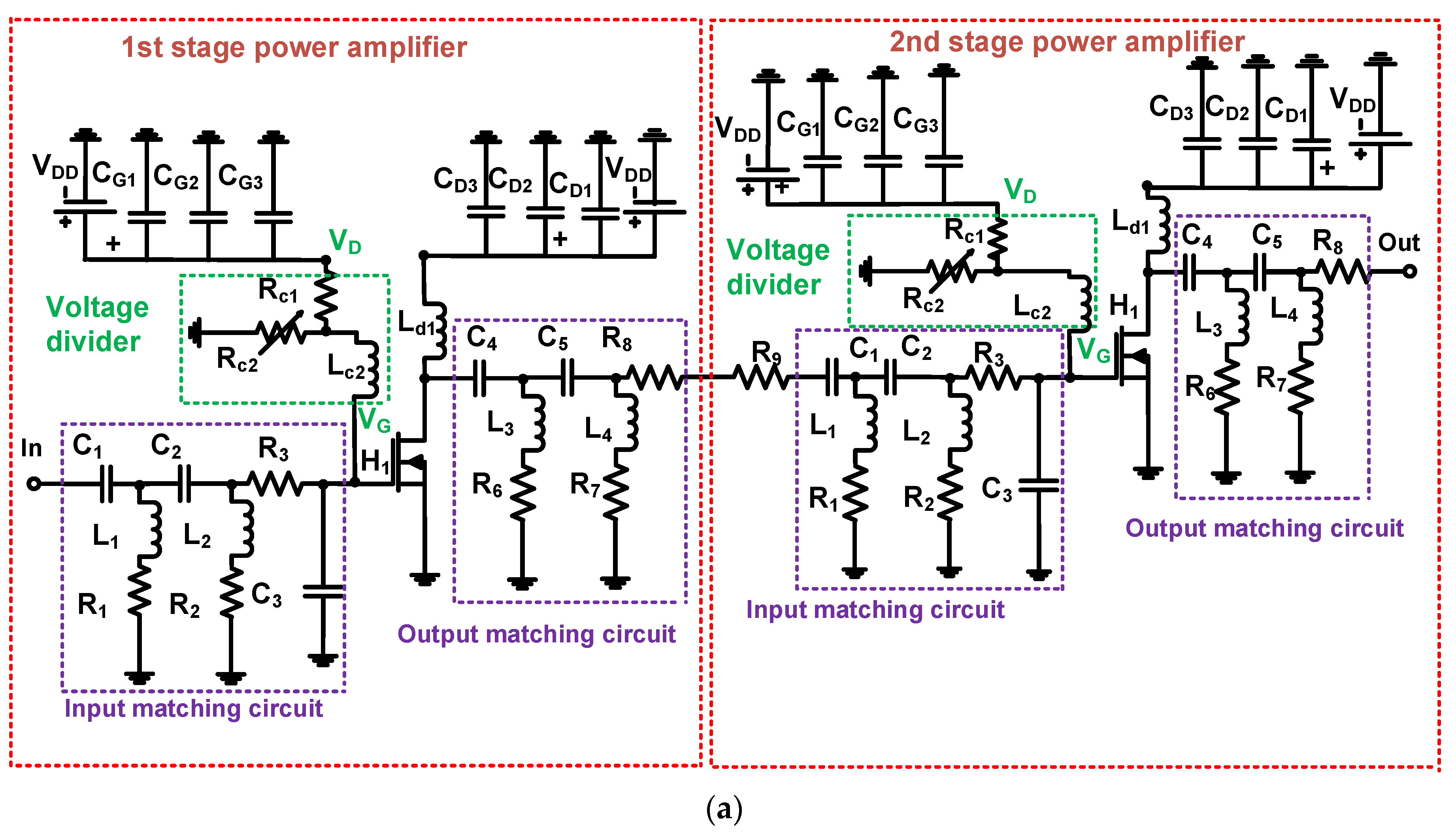
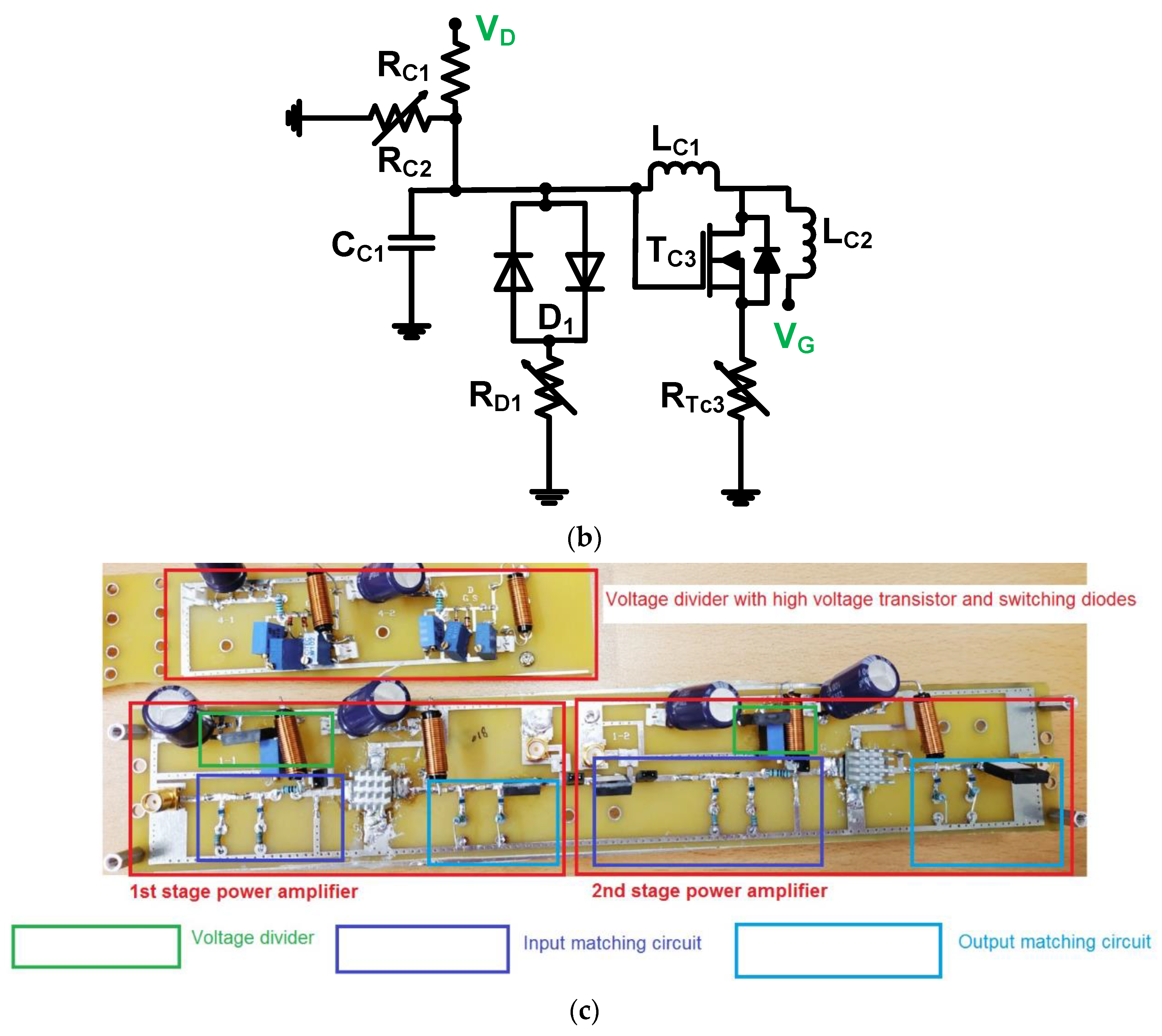
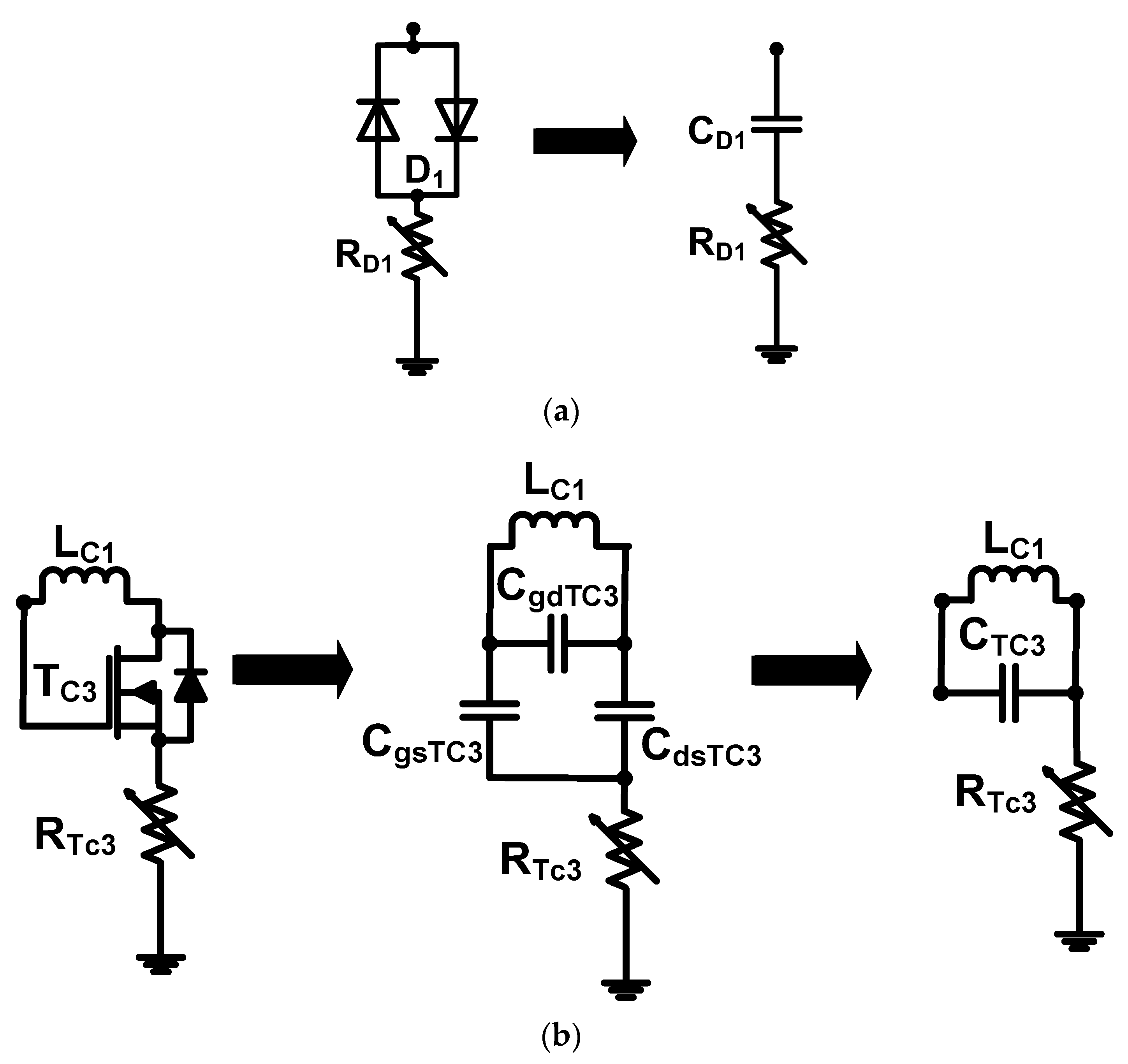
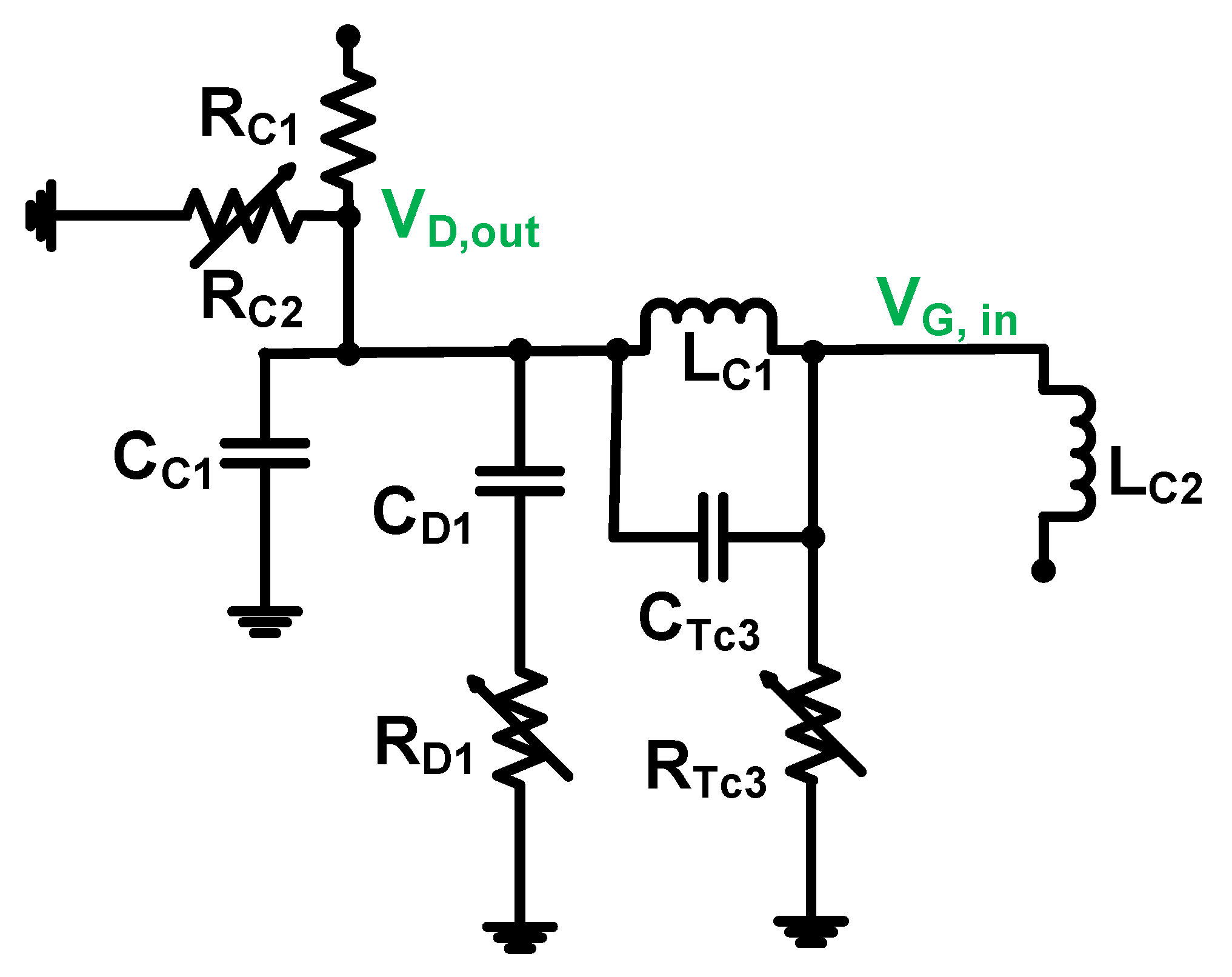
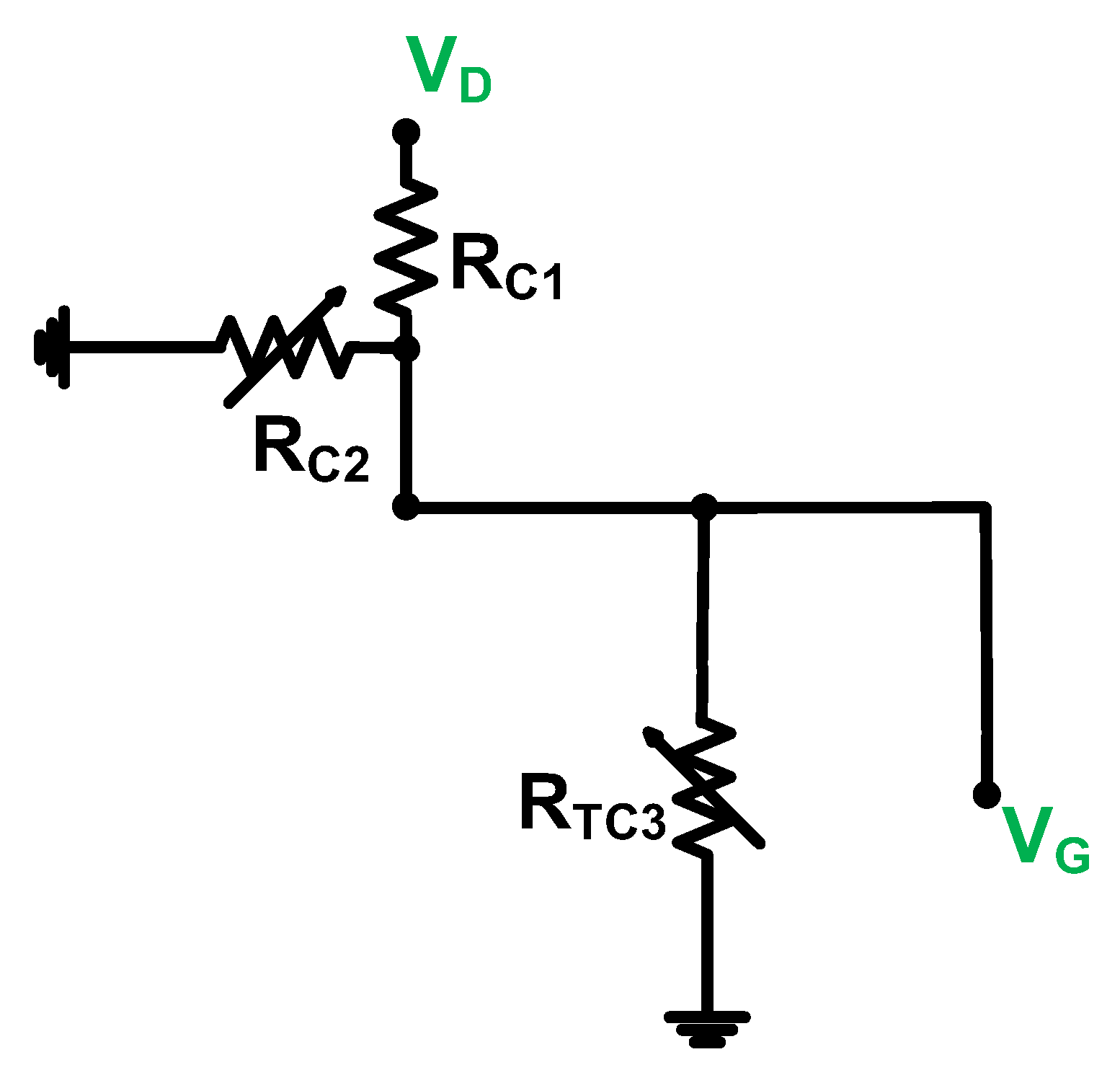
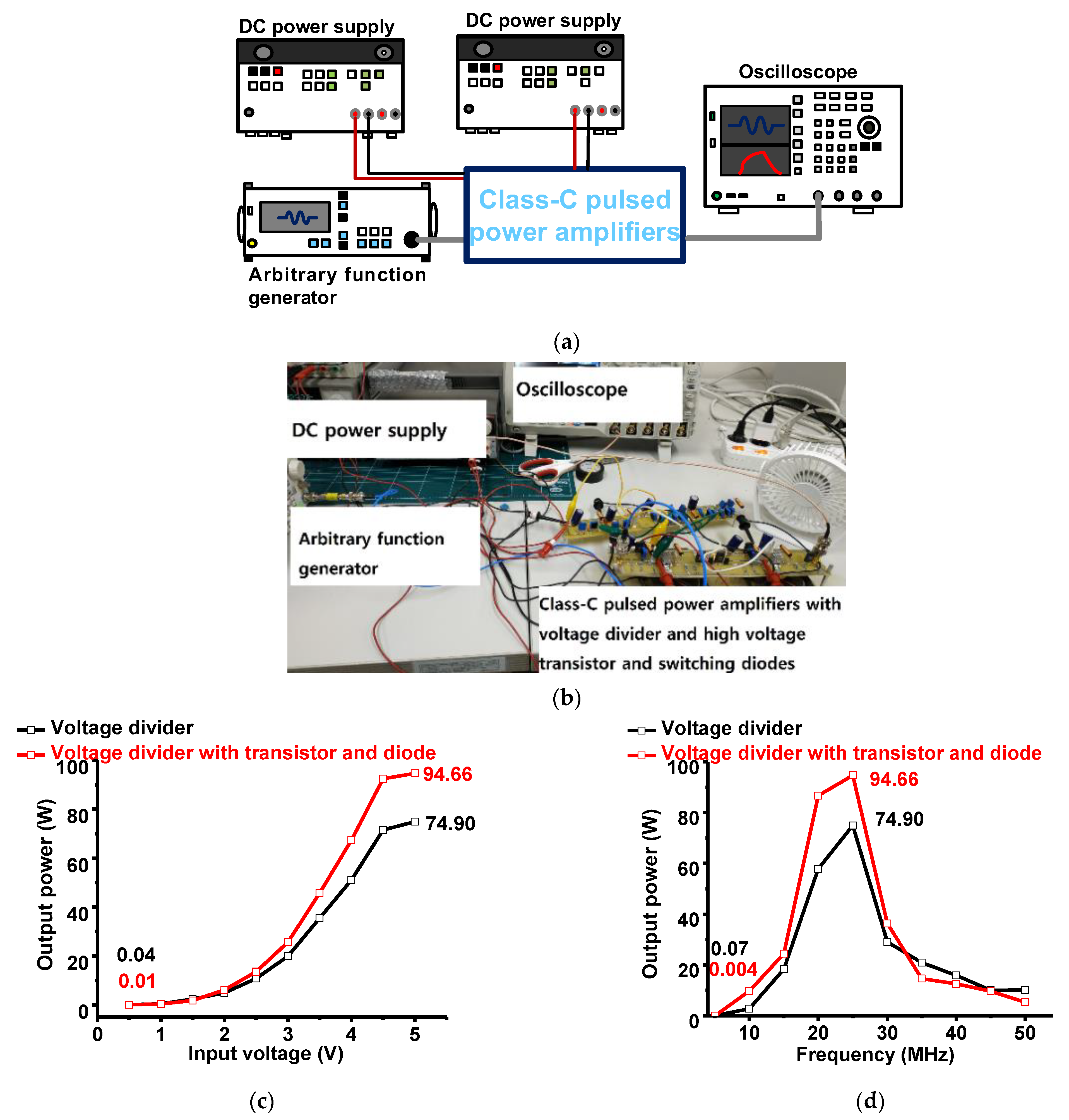
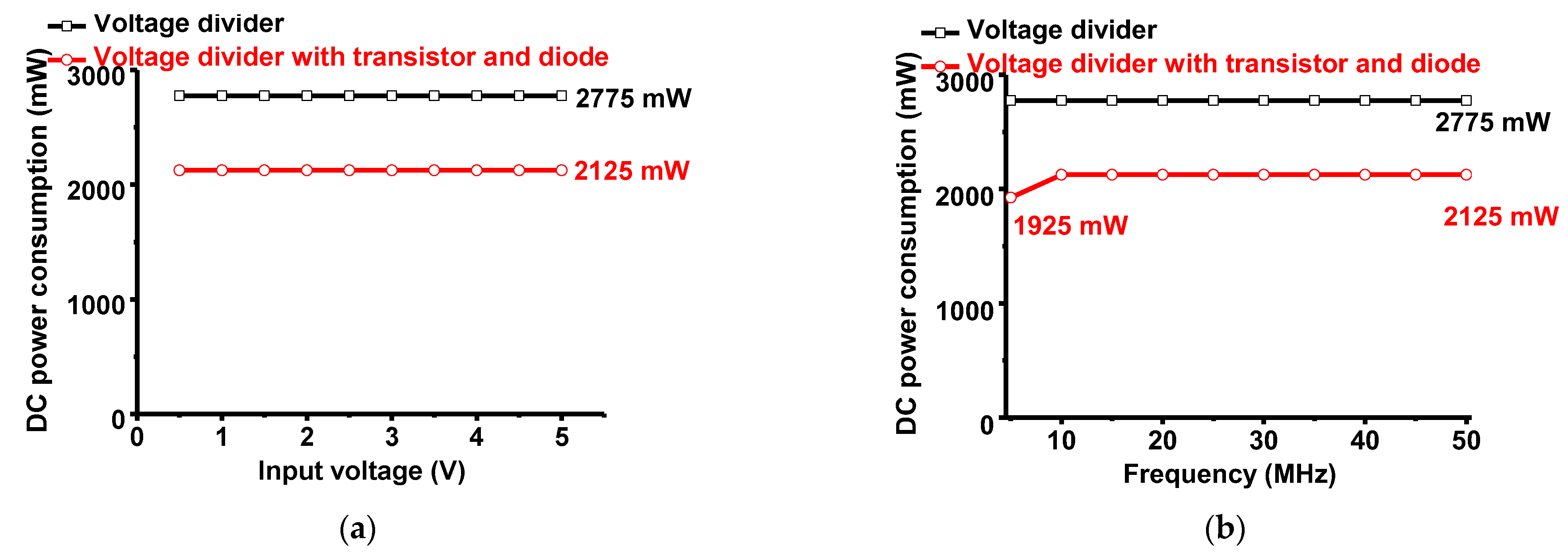
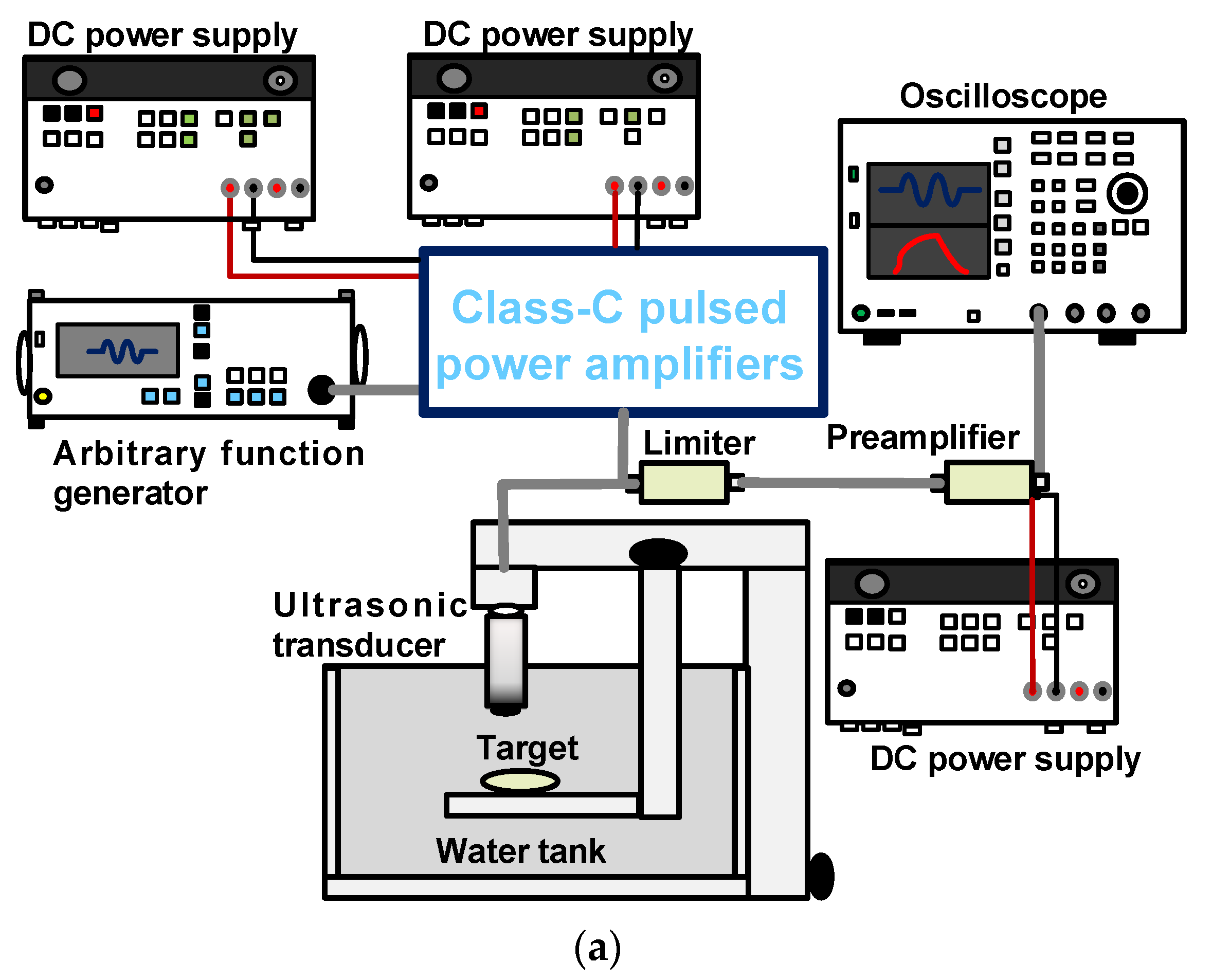
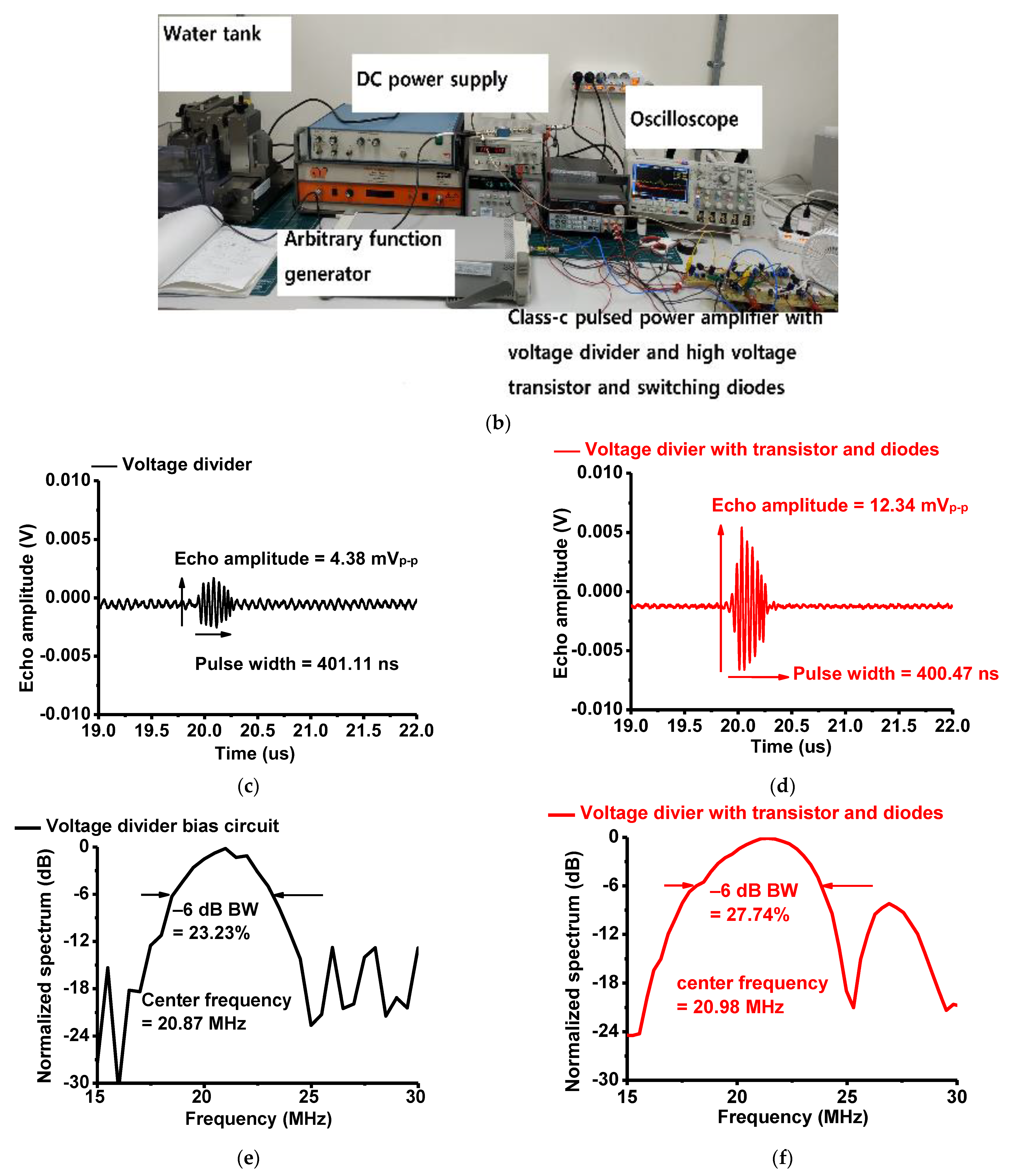
| Papers | Frequency or Bandwidth | Class Mode | Output Voltage | Output Power | Gain | Efficiency | Application |
|---|---|---|---|---|---|---|---|
| [41] | 25 MHz | Class-B | – | – | 16.97 dB | – | Piezoelectric Transducer |
| [42] | 6.5 MHz | Class-AB | 90 Vp-p | – | 40.9 dB | – | Piezoelectric Transducer |
| [19] | 6 MHz | Class-AB | 180 Vp-p | – | – | 44% | Piezoelectric Transducer |
| [20] | 15 MHz | Class-AB | 60 Vp-p | – | – | – | Piezoelectric Transducer |
| [43] | 25 MHz | Class-AB | 31.5 Vp-p | – | – | – | Piezoelectric Transducer |
| [44] | 8.6 MHz | Class-AB | 180 Vp-p | – | – | 30% | Piezoelectric Transducer |
| [45] | 24 MHz | Class-AB | 180 Vp-p | – | – | – | Transducer |
| [46] | 25 MHz | Class-C | – | – | 17.14 dB | – | Piezoelectric Transducer |
| [47] | 25 MHz | Class-C | – | – | 14.96 dB | – | Piezoelectric Transducer |
| [48] | 3.5 kHz | Class-D | – | – | 43.5 dB | – | Dielectric Elastomer Transducer |
| [49] | 1.01 MHz | Class-DE | – | 0.8 W | – | 90% | MRI-compatible Piezoelectric Transducer |
| [50] | 42.05 kHz | Class-E | 58.76 Vp-p | – | – | – | Langevin Transducer |
| [51] | 41 kHz | Class-E | – | 40 W | – | – | Langevin Transducer |
| [52] | 29.29 kHz | – | 161.01 Vp-p | – | – | – | Sandwiched Piezoelectric Transducer |
| This work | 25 MHz | Class-C | – | 94.66 W | – | – | Piezoelectric Transducer |
Publisher’s Note: MDPI stays neutral with regard to jurisdictional claims in published maps and institutional affiliations. |
© 2022 by the author. Licensee MDPI, Basel, Switzerland. This article is an open access article distributed under the terms and conditions of the Creative Commons Attribution (CC BY) license (https://creativecommons.org/licenses/by/4.0/).
Share and Cite
Choi, H. Class-C Pulsed Power Amplifier with Voltage Divider Integrated with High-Voltage Transistor and Switching Diodes for Handheld Ultrasound Instruments. Energies 2022, 15, 7836. https://doi.org/10.3390/en15217836
Choi H. Class-C Pulsed Power Amplifier with Voltage Divider Integrated with High-Voltage Transistor and Switching Diodes for Handheld Ultrasound Instruments. Energies. 2022; 15(21):7836. https://doi.org/10.3390/en15217836
Chicago/Turabian StyleChoi, Hojong. 2022. "Class-C Pulsed Power Amplifier with Voltage Divider Integrated with High-Voltage Transistor and Switching Diodes for Handheld Ultrasound Instruments" Energies 15, no. 21: 7836. https://doi.org/10.3390/en15217836
APA StyleChoi, H. (2022). Class-C Pulsed Power Amplifier with Voltage Divider Integrated with High-Voltage Transistor and Switching Diodes for Handheld Ultrasound Instruments. Energies, 15(21), 7836. https://doi.org/10.3390/en15217836





